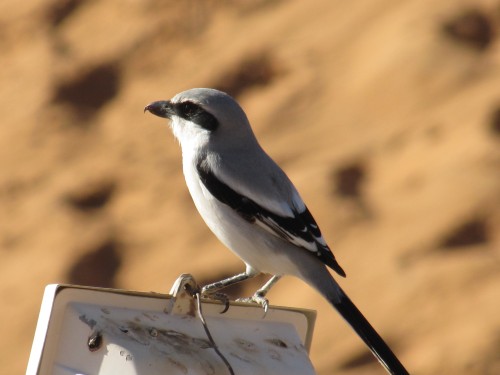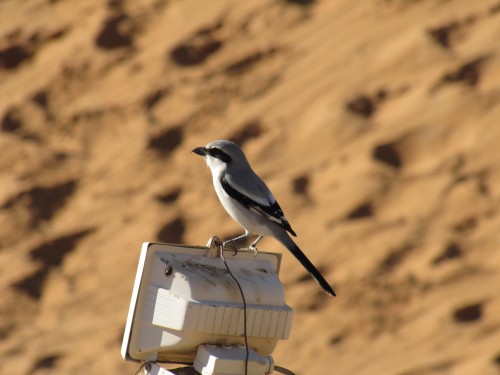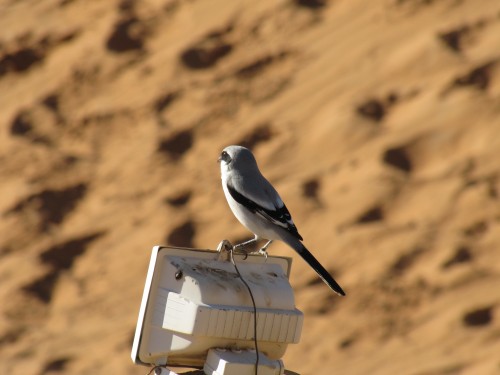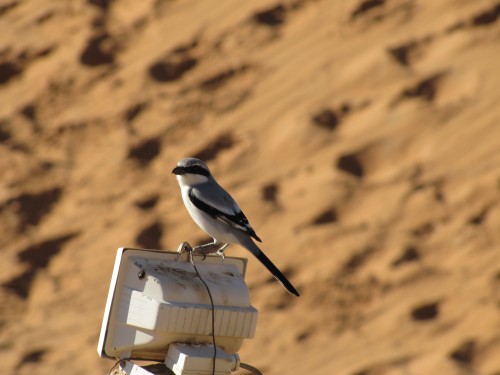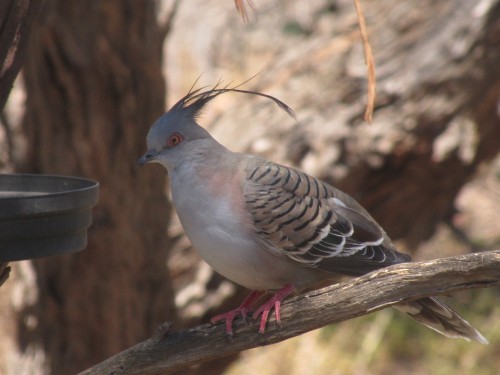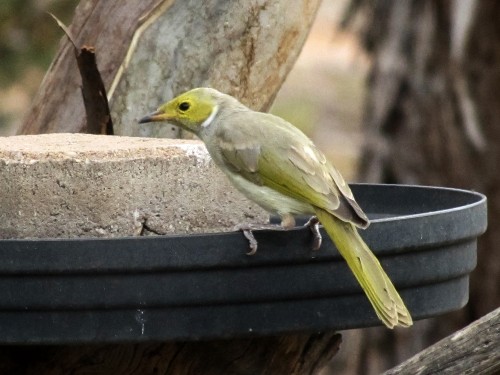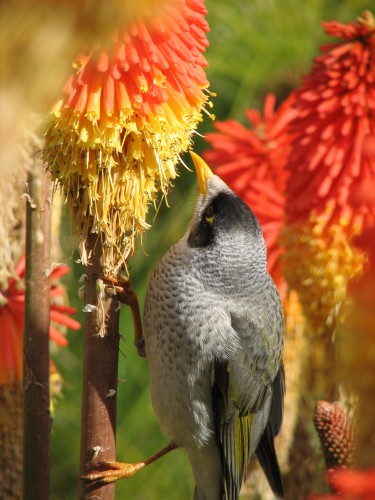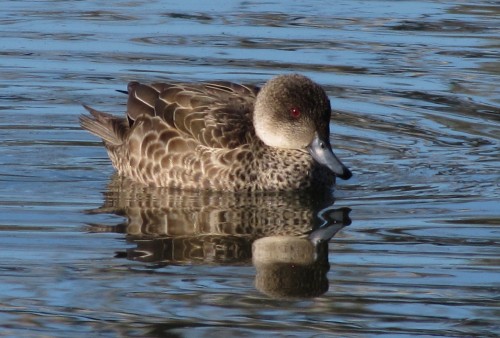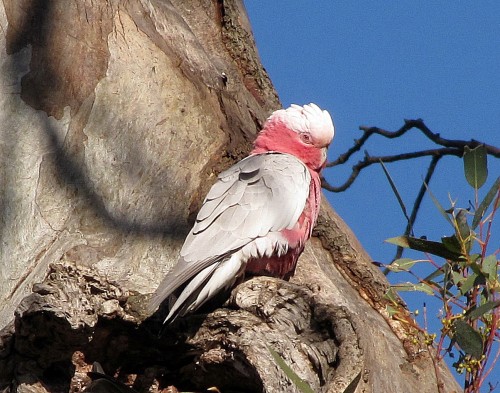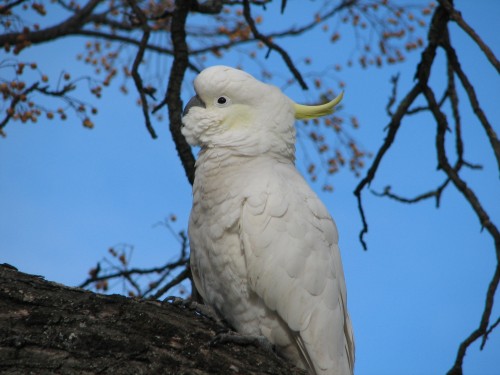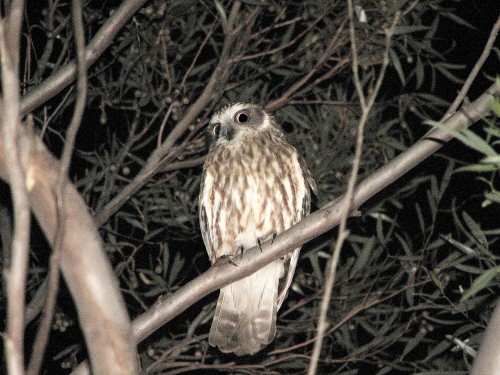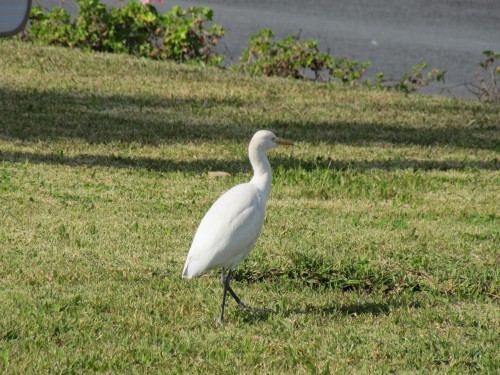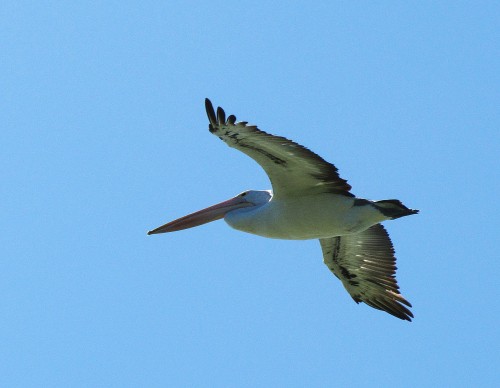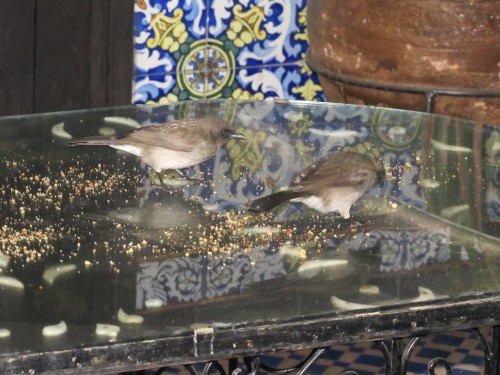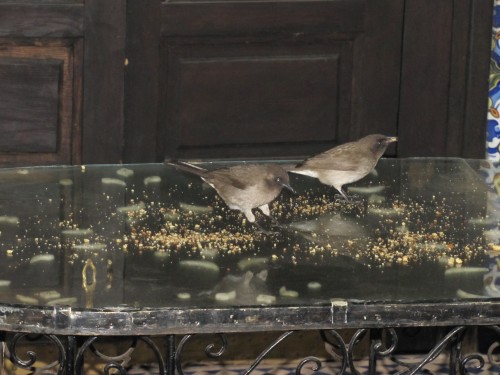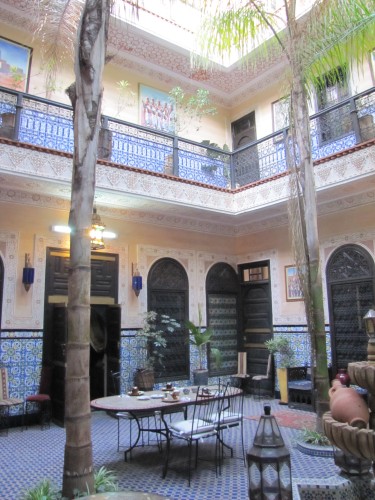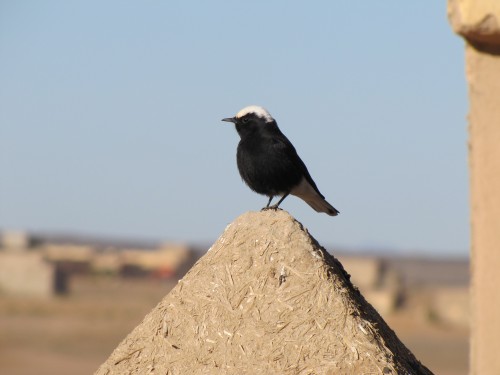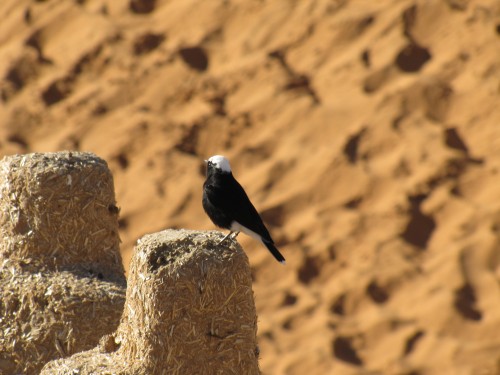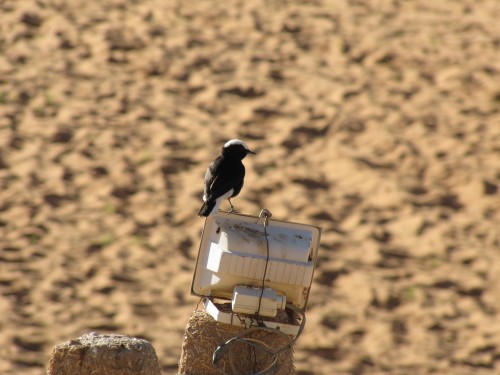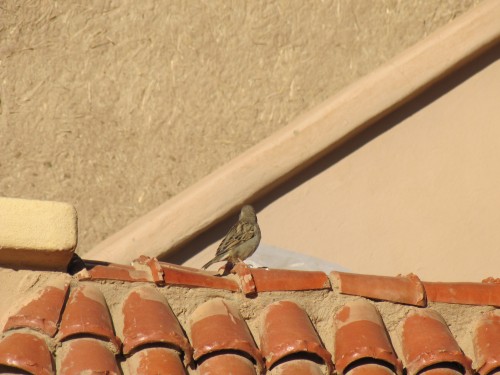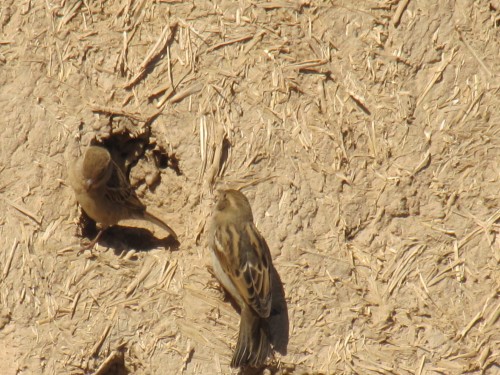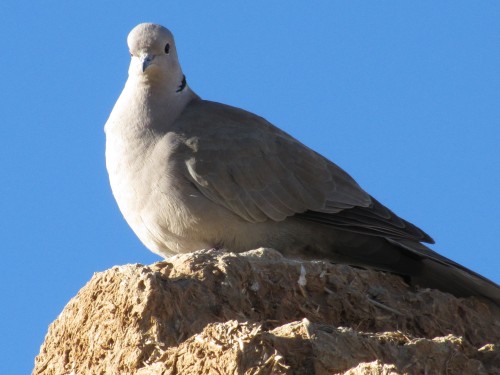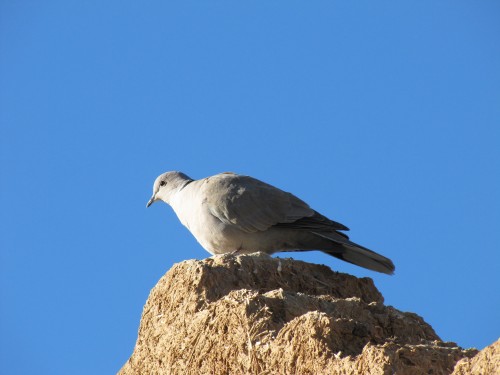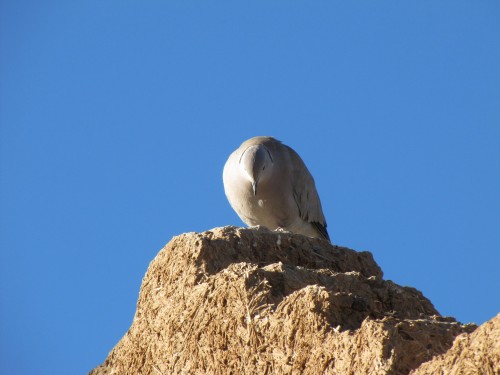Southern Grey Shrike, Morocco
Several years ago we visited Morocco and fell in love with the country. It is a land of great contrasts and beauty, and we found the people to be friendly and welcoming. During our tour, we visited many wonderful and beautiful places. One of those places was the Sahara Desert. It did not disappoint. Over recent weeks, I have posted a few of the bird photos I took at the time.
The highlight of our visit to the desert was a camel ride into the Sahara on sunset. This was on Christmas Eve, so it certainly was a Christmas with a difference and certainly one to remember. We slept in a Berber tent in the desert overnight. The next morning – Christmas Day – we rode back to a local hotel where we had a late breakfast. While we were eating I managed some good photos of several local bird species. You can read about them here and here and here.
Today I feature another bird species seen at that location, the beautiful Southern Grey Shrike. This bird posed cooperatively for me on a light fitting just a few metres from where we were sitting. I love it when the birds pose like that – so considerate of them. This species, a member of the shrike family of birds, is found in northern Africa (except in the heart of the Sahara), Spain and through to Pakistan and India in the east. It is a passerine bird of medium size. It eats rodents, insects and will even take small birds as a part of its diet.
Further reading:
- Southern Grey Shrike – the article on Wikipedia
- Eurasian Collared Dove – an article about another species I photographed in the same location
- White-crowned Black Wheatear in the Sahara
Birding is easy
It has a been a long time since I wrote a basic post about birding.
Some years ago I wrote a series of 21 articles called How to be a Birder.
This post is not an update on that series. This is just a heads-up to new readers of this site. I was encouraged to write this in response to an article I recently read here. That article is for American readers. What I have to say is largely for my Australian readers – but the same principles apply nearly worldwide.
Birding is really easy
Birding is quite easy. Just glance out of the window into your garden. Do you see any birds? Perhaps you can see a pigeon or a dove or possibly a sparrow. You’ve just become a birder. One of our common birds here in South Australia is a Crested Pigeon, shown below. (Okay – some of you will know it as a “Top Knot” Pigeon, but strictly speaking, that official name belongs to a bird found in the eastern parts of Australia.)
Binoculars and Bird Baths
I usually keep a cheap pair of binoculars handy where I can get to them quickly. We often spend a good part of the day in our sunroom which overlooks a part of the garden. A large picture window in this room gives us a great view of several bird baths. The binoculars give me a great view of any birds which come for a drink or a bath. Installing a bird bath in your garden, even a small garden, can help to bring the birds closer for you to watch – birds like the honeyeater in the next photo.
Into the garden
A short stroll out into the garden or even down the street can reveal plenty more birds. Keep a watch out for any movement in plants, bushes and up in the branches of any trees growing nearby. Pay special attention to any flowers you see – Australian honeyeaters and parrots love the flowers of both native Australian plants as well as exotic plants. The Noisy Miner shown in the photo below is sure enjoying a feed from a red hot poker flower.
Go for a picnic
Another good way to become a birder and to begin enjoying our birds is to go for a picnic. This could be to a local park, a nearby river, lake or beach or to your nearest botanic gardens. In these places, you are sure to find a good variety of birds, especially if there is a water feature or natural body of water. Becuase such places often have crowds of people, many of the birds will have become quite accustomed to humans and you will be able to get up quite close. Near and in the water you will find ducks, geese, herons, egrets, grebes, coots, moorhens, cormorants and many more that I haven’t listed here.
Although it may be tempting and satisfying, please do not feed the birds. Human food, especially bread, is not suitable for Australian birds. In fact, it can kill them.
Go hiking or camping
Australia has hundreds of National Parks and Reserves in every state. These locations are almost always excellent places to go hiking, having a barbecue or picnic or even camp overnight or for longer. Because these areas are usually natural bushland, the birding can also be wonderful, especially in spring here in Australia when many birds are nesting. Keep on the lookout for birds in the bushes and any vegetation, as well as higher up in the branches of the trees. The photo of a Galah shown below was taken at a wetland area near my home. The wetlands area is actually a sewage installation, beautifully landscaped with many bushes and trees.
Birding while travelling
Warning: keep your eyes on the road and on the traffic all around you!
Yes, I also watch out for the birds I see while travelling. We have relatives and friends in many parts of Australia and visiting them sometimes entails many hours – and sometimes days – of travelling our countryside. As we go along I keep my eyes on the traffic and road conditions, but over many years, I have also become adept at watching out for any birds on the side of the road or flying over the road. Birds of prey like eagles and hawks are common along our country highways, as are ravens, choughs, magpies and currawongs. Sometimes this can be frustrating when it comes to identifying them as we speed by in our car, only getting a brief glimpse of the bird.
From time to time, it is safe to stop and get a closer look at a bird, even getting a photo if I have the camera handy. A few years ago I was driving slowly in an Adelaide street after dropping off my wife at a hospital. I was able to stop safely and quickly and get the photo of a Sulphur-crested Cockatoo which I have shown below. There was a small flock of these lovely birds right there in a suburban street tree.
Birding at night
For some people, this might be a little difficult, depending on the environment surrounding their home. It possibly wouldn’t work if you live in a high-rise apartment in the heart of a city. On the other hand, we live on the edge of a large country town with plenty of natural and planted scrub all around. We quite often switch off the television at night; there’s often nothing worth watching anyway.
The area around our home is often very quiet with very little traffic. On these occasions, we occasionally hear nocturnal birds such as owls, frogmouths or nightjars calling. The Southern Boobook Owl shown below was photographed in our garden some years ago.
Birding while commuting
One way of usefully using the time spent commuting is to do some casual birding from the bus, tram or train. I haven’t done this much in my life because I always drove a car to work. To illustrate my point, we recently did a bus tour of Morocco. Wonderful country. Along the way I was able to see quite a few birds while travelling along, even getting the occasional photo, such as the egret shown below, taken from the bus. On the other hand, travelling at 300 kph in the high-speed trains in Spain is just a little too fast to be watching out for any birds. Exhilarating, yes, but difficult.
More unusual birding places
In Bed: I like lingering in bed some mornings, trying to identify the bird calls outside without actually seeing them. This is particularly enjoyable when out bush camping, or in our caravan.
In church: I must confess that I have taken notice of birds while sitting in church. Our church has several windows which give me a good, but limited, view outside. Not getting distracted from the sermon can be a challenge.
At a funeral: Again, I confess to sometimes being distracted by birds at a funeral, especially during the committal if this is held outdoors. I refrain from taking my camera or binoculars on such occasions. The same applies to when I am in church.
In a plane: It is possible to see some high flying birds from planes, but I am talking about birds seen on the tarmac while waiting for the plane to leave, or while taxiing on the runway. I managed to see birds from the window of a plane in Adelaide, Kuala Lumpur, Dubai and Addis Ababa. Now if you add birds seen from the terminal while waiting for a flight, the list gets longer.
On a canoe, boat or ship: I have watched birds from my canoe on many occasions. I have also taken many photos from a friend’s boat on a nearby lake (see the pelican below). I even did some birding while travelling on a ship (ferry) from Morocco to Spain.
In hospital: Thankfully, I have only been in hospital on a handful of occasions. I have, however, visited people in hospital. Whenever there is a suitable window with a garden outside, there is always the potential to even be a birder while recuperating in bed.
How about you?
- Over to my readers; where do you like to go birding?
- What unusual places have you been birding?
- Leave a comment or two; I would really appreciate that.
Good birding,
Trevor
Postscript: In a restaurant: we stayed in a beautiful riad in Marrakech, Morocco. Because it was open to the sky, the birds were free to fly into the restaurant area. The owners even put out seed to attract them. See the photos below.
White-crowned Black Wheatear in the Sahara
On our tour of Morocco a few years ago we stopped for breakfast in the garden of an auberge (hotel) on the fringe of the Sahara Desert. We had spent the night in a Berber tent in the desert. It happened to be Christmas Eve – one we will not forget because it was so different. During breakfast, I was able to add quite a few photos of birds hanging around the gardens and buildings of the hotel.
One of the delightful birds I saw and photographed was the White-crowned Black Wheatear (Oenanthe leucopyga). This was a “lifer” – the first time I had ever seen this species in my life. I was so pleased to get several good photos of the bird. At the time, I didn’t know what it was and I have needed to do plenty of research here at home, both for this species, and for many others seen on the trip.
I have discovered that wheatears were once regarded as members of the Thrush family. In more recent times the experts have agreed that they are, in fact, members of the Old World Flycatcher family of birds.
They breed in the stony deserts from the Sahara across northern parts of Africa and as far as Iraq. It also occurs as a vagrant in parts of Europe, even occasionally in Great Britain. It makes a nest in the crevices of rocks or walls.
This species eats mainly insects. It also has a loud song, but the one I saw wasn’t calling.
You can read more about this species on Wikipedia here.
House Sparrows in the Sahara
House Sparrows are an often over-looked bird species.
In my last post, I wrote about a visit a few years ago to the Sahara Desert in Morocco. In that post, I shared photos of the Eurasian Collared Dove I saw in Merzouga on the edge of the Sahara Desert. My wife, my daughter and I were on a tour of Morocco. The emphasis was on being tourists. Despite this, I was also on the lookout for opportunities to see new birds – any birds – and to get photographs of as many as possible.
After our camel ride into the Sahara Desert on sunset, we stayed in a Berber tent on Christmas Eve. Pre-dawn on Christmas Day saw the group staggering up a nearby sand dune to witness the sun rising over the desert, a truly wonderful experience. After riding out of the desert on camels again – such uncomfortable animals – we had breakfast. This sumptuous meal was in the grounds of a nearby hotel.
While having breakfast I was able to photograph a small number of birds nearby, including the female House Sparrows shown in today’s post. I found that this is a common species throughout Morocco. I recorded it in many places, including the bigger cities like Casablanca through to smaller rural villages.
I even noticed a small flock of them in the few trees near our campsite out in the desert. There was obviously enough food around to sustain a small population a considerable distance from houses. I find this is also true of this species here in Australia. I have seen quite large flocks – up to many dozens or more – quite some distance from human habitation, their preferred habitat. The small flock I saw in the desert had the advantage of plenty of grasses on and between the sand dunes nearby, as illustrated by these photos.
I am intrigued by the photo below. This shows two female sparrows at a hollow in the mud and straw wall of the building near where we had breakfast. I couldn’t tell whether they had made the hollow, or some other species had done it. It reminded me of the House Sparrows I encountered when I was a child. I grew up on a wheat and sheep farm in the Murray Mallee district of South Australia. The plentiful sparrows often made small nesting tunnels in the straw-thatched roof of the cow shed, as well as the roof of a hay shed.
Eurasian Collared Dove in the Sahara
On another of my sites (Trevor’s Travels) I have been writing about a tour of Morocco I undertook several years ago. I have, in recent days, finally got around to posting some of the many photos taken on that trip, along with detailed descriptions of what we did and saw. While looking at the photos I found some quite acceptable bird photos.Whenever I could get photos of the local birds, I took them. Identifying them has taken quite a while
Whenever I could get photos of the local birds, I took them. Identifying them has taken quite a while, mainly because I am not very familiar with the birds of Morocco. Over the coming days, I plan to post a few of these photos, along with some information about them.
During our tour, my family and I went on a camel ride into the Sahara Desert. This was at the locality known as Merzouga in the eastern part of the country. I must say that the desert is spectacular; I’ve shared many of the photos on my travel site. We rode the camels into the desert on Christmas Eve, staying in a Berber tent in the desert overnight. It was an unforgettable experience. I saw a few birds on the camels ride, but the moving back of such an animal is far from being an ideal photography platform. In fact, all my bird photos taken on the camel ride were too blurry and unidentifiable. Camel riding is also very uncomfortable! Enough said.
The next morning we rode (with more discomfort) through more spectacular sun dunes, deep red in the early morning sun. We ate a late breakfast at one of the local hotels. It was while having breakfast that I saw several species new to me.
The first one, featured today, was the Eurasian Collared Dove. This lovely dove is found extensively throughout Europe, Asia and has been introduced into North America. It is also found in the northern edges of Africa, including Morocco.
Further reading:
- Eurasian Collared Dove – the excellent article on this species on Wikipedia.
- Plants in the Sahara Desert
- Common Redstart, Volubilis, Morocco
- Grey Heron, Meknes, Morocco
- White Storks in Morocco
